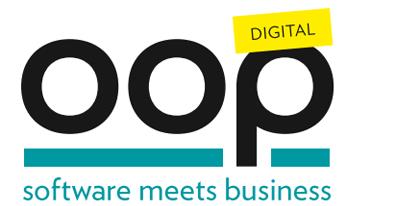
Conference Program
Please note:
On this site, there is only displayed the English speaking sessions of the OOP 2022 Digital. You can find all conference sessions, including the German speaking ones, here.
The times given in the conference program of OOP 2022 Digital correspond to Central European Time (CET).
By clicking on "EVENT MERKEN" within the lecture descriptions you can arrange your own schedule. You can view your schedule at any time using the icon in the upper right corner.
Scrum Patterns: Understanding Scrum In-Depth and Accelerating your Team
The Scrum Guide lays out the rules of the game called Scrum. Beyond it, there are known "secrets" necessary to making Scrum work—but most teams never get to them.
Scrum experts have been working for years to collect and write these nuggets down as patterns. The seminar is based on the book "A Scrum Book" — a de facto standard for Scrum, and a definitive exposition of the why behind everything Scrum. You'll learn about Scrum at a deeper level than you probably reached during your CSM, PSM, or CSPO training — focusing on your team's special needs.
Maximum number of participants: 30
Target Audience: Scrum team members (all Scrum roles); managers and other players in organizations using Scrum
Prerequisites: Basic Scrum familiarity (any Scrum certification, or membership on a practicing Scrum team)
Level: Advanced
Extended Abstract
When you have a new child in your family, there are a lot of things you need to know that aren't in the owner's manual. What? You didn't get an owner's manual with your child? Even Scrum has an "owner's manual" called The Scrum Guide — but all it does is to provide a dry, formal description of the boundaries of Scrum. Yet there are known "secrets" to making Scrum work, but, unfortunately, some teams never get to them.
Scrum community experts have been collecting these secrets for years, and working together to write them down as patterns. The seminar is based on the book "A Scrum Book" — a de facto standard for what Scrum means, and a definitive exposition of the why behind everything Scrum. Even the inventor of Scrum, Jeff Sutherland, now uses them as a central part of his training and of describing Scrum. And now they’re freely available to you. Come and learn how to use them and what they mean to your organization, and how you can use them to chart a powerful new direction of kaizen for your Scrum team! You'll learn things about Scrum at a deeper level than you probably reached during your CSM, PSM, or CSPO training — and the seminar is focused on your team's special needs.
There will be exercises to develop pattern sequences from the pattern language, and to identify solutions to your own impediments using patterns. The session culminates with an exercise where you assess your own Scrum team and develop a concrete action plan to remedy the gaps between your current practice and those parts of Scrum that will move you forward. In the end, the goal is to move beyond Scrum — and this session lays the foundations for you eventually to do that.
We encourage you to attend as Scrum team, perhaps using this event as a retrospective!

